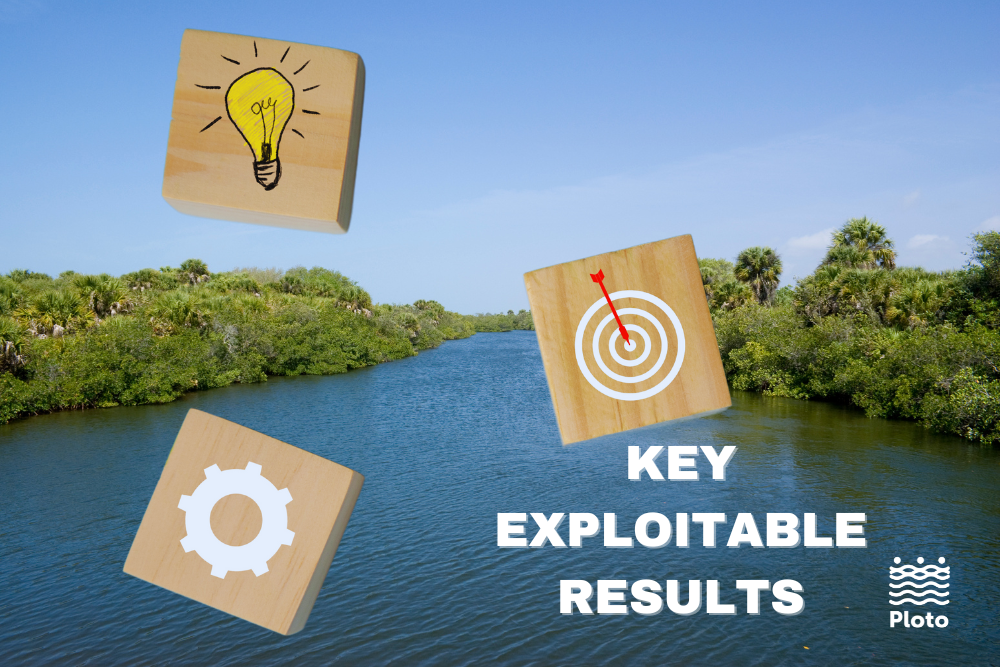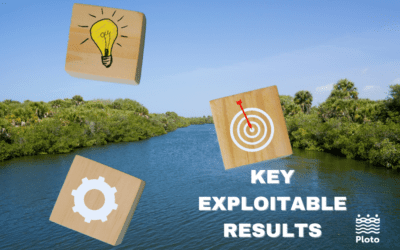The main outcome of the PLOTO project will be the integrated PLOTO platform. All tools, services and solutions (be it existing or emerging) that are considered in the context of PLOTO, will be leveraged in order to develop an integrated planning platform that can be primarily applied to Inland Waterways (IWW) infrastructures. The assumption is that proper prevailing solutions (e.g., ditches, flood storage, etc.) and Nature-based solutions (NBS) (e.g., riverbank nourishment, living shorelines, etc.) supported by other tools and measures (e.g., monitoring tools, institutional measures – such as financial initiatives, etc.) can reduce Climate Change (CC) related risks and improve the resilience of IWW and, at the same time, protect the biodiversity and other environmental parameters.
The main aim of the PLOTO platform is to address multi-hazard risk understanding, smart prevention and preparedness, as well as faster, adapted and efficient response. In addition, the focus of the integrated system is on supporting operational and strategic adaptation and mitigation measures, by better absorbing and efficiently recovering from CC impacts (including extreme events), thus increasing the resilience of IWW.
The PLOTO platform will exploit existing and new captured data from various sources, along with the expert knowledge of partners specializing on risk and safety engineering, as well as on new materials and solutions in order to assess the current condition of specific (identified) elements of the IWW (i.e., riverbed, riverbank, inland ports, etc.), while updating/calibrating the numerical models of these elements used in the simulator. These detailed models will be utilized to: (i) validate simplified surrogate models, (ii) achieve accurate pre-event and near-real-time post-event assessment of the impact of the climate pressure and other hazards, (iii) define related vulnerability functions and capacity thresholds of the current IWW, (iv) optimize any intervention(s) or retrofitting actions and finally, (v) evaluate the response of the (possibly repaired) structure in the future, for a large number of future hazards scenarios and the evaluation of proposed adaptation and mitigation measures.
To guide the integration of different software components into the PLOTO integrated platform efficiently, a suitable development and testing environment has been set up, following Continuous Integration/ Continuous Delivery (CI/CD) best practices to enable automation and continuous monitoring of the development, testing and integration processes. The objective is to provide the software component developers with an appropriate framework and tools to build, test and deploy their code developments and updates, in an automated manner that will facilitate proper integration and validation of the components before their deployment in an operational context (i.e., pilot execution environments). CI principles are aligned with frequent software integration attempts (shortening the software development cycles), and therefore allow for early detection of any arising issues and long backtracking procedures.
A key element of the DevOps best practices that will be followed for the PLOTO platform is the containerization of the developed software components. Containerization is a well-known virtualization and software packaging approach in which all the subcomponents and software dependencies of an application can be bundled together in a single container image and then instantiated in an isolated user space of a shared operating system, and replicated easily across different execution environments (e.g., development/testing and pilots’ execution environments in the case of PLOTO).
The figure below presents an example of an automated development and testing workflow, managed by the CI server. The CI server can be configured to: trigger the software build, testing and deployment steps of the workflow after a developer uploads a development update to the corresponding PLOTO repository; provide quick feedback about the success/failure of the individual steps and the full workflow.

CI/CD development and testing workflow
Written by Dimitrios Liparas & Panos Matzakos, Netcompany-Intrasoft (INTRA) & Dimitrios Vamvatsikos, School of Civil Engineering, National Technical University of Athens (NTUA).



